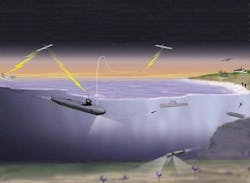SuperSpeed USB 3.0, which moves data at 5 gigabits per second, to grow by 178 percent each year through 2015
The switch to SuperSpeed USB is more quickly than analysts had expected, In-Stat officials say, because of fast integration of the standard into core logic chipsets. USB 1.0 and 2.0, nevertheless, still will be relevant for the near future, In-Stat analysts say.
USB 1.0 will remain dominant in mouse pointing devices and PC keyboards, while USB 2.0 will remain in many PC peripheral and CE applications, analysts say. Adoption of USB 3.0 initially will not be so broad as USB 1.0 and 2.0 were because the multi-gigabit speed of USB 3.0 is not necessary in some devices, explains says Brian O’Rourke, research director at In-Stat.
SuperSpeed USB 3.0, however, will come to dominate in applications that require data transfers of increasingly large pools of data, such as PCs, external hard disk drives, and USB flash drives, O'Rourke says. USB 3.0 should move in to applications like digital still cameras, camcorders, and portable media players over the next few years, he says.
More than 3.5-billion USB devices shipped in 2010, and 75 percent of those were USB 2.0, In-Stat analysts say. Mobile phones are a key USB driver and should play a substantial role in the emergence of USB 3.0.
For more information contact In-Stat online at www.instat.com.
Related stories
-- Fischer releases rugged USB product at AUSA Winter Symposium; and
-- Water-resistant rugged USB connector introduced by CONEC for industrial and outdoor applications.
